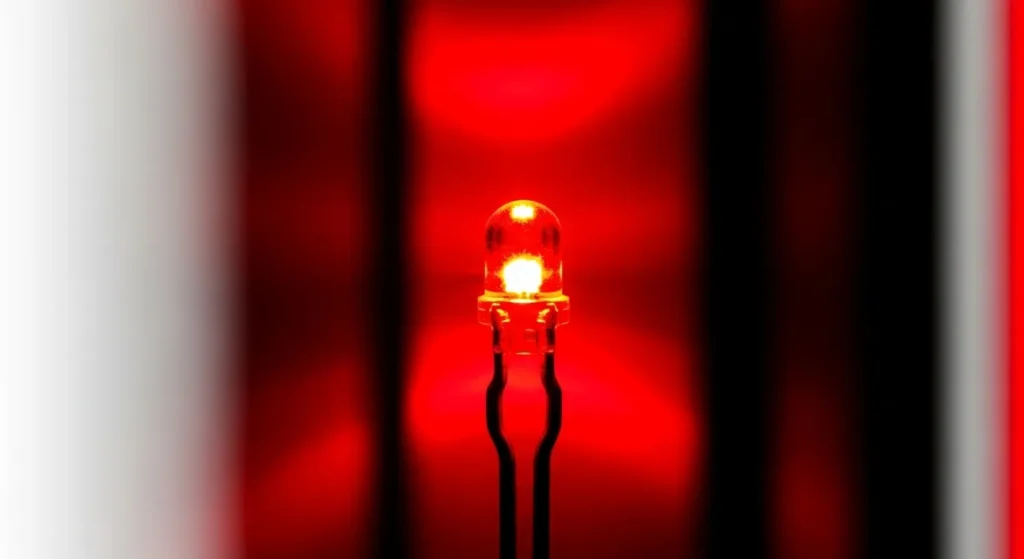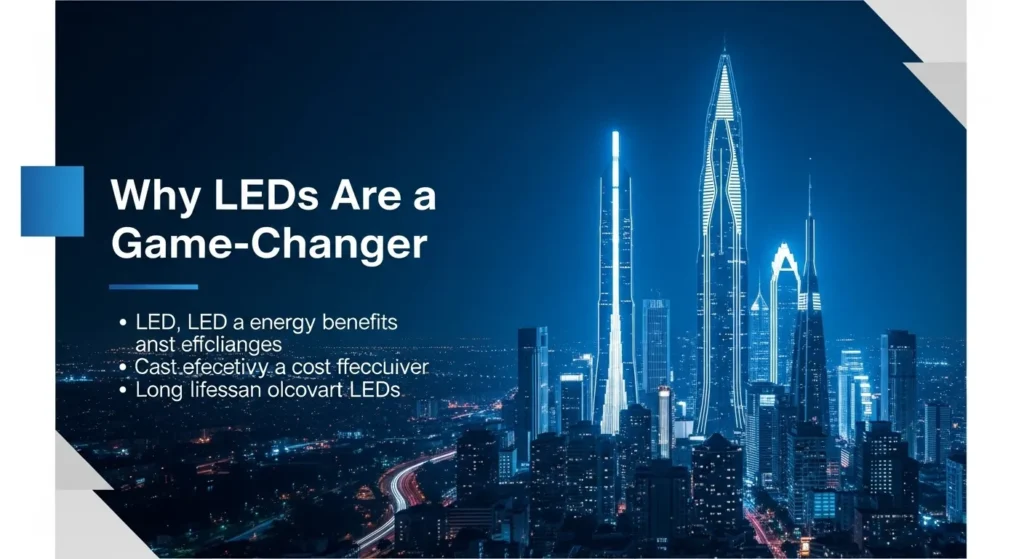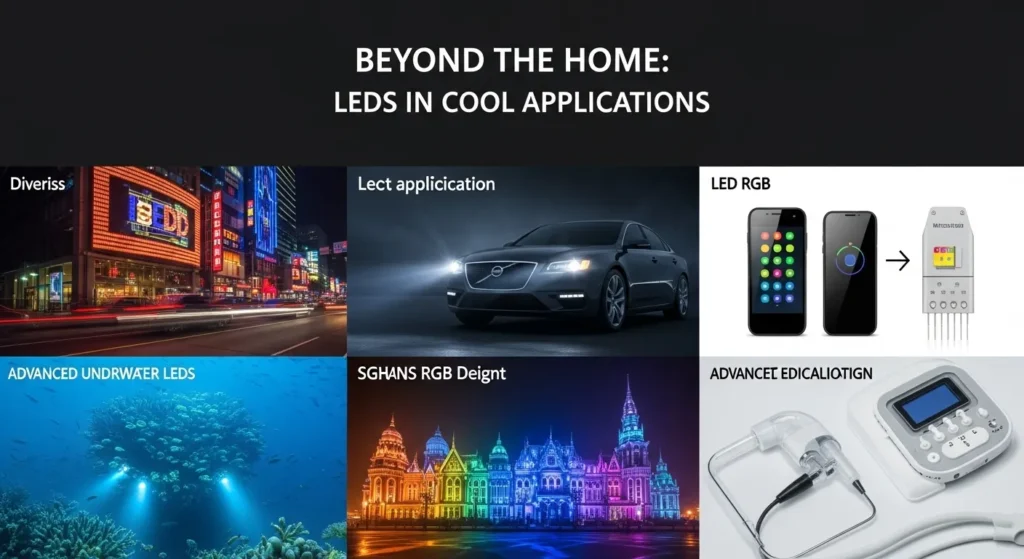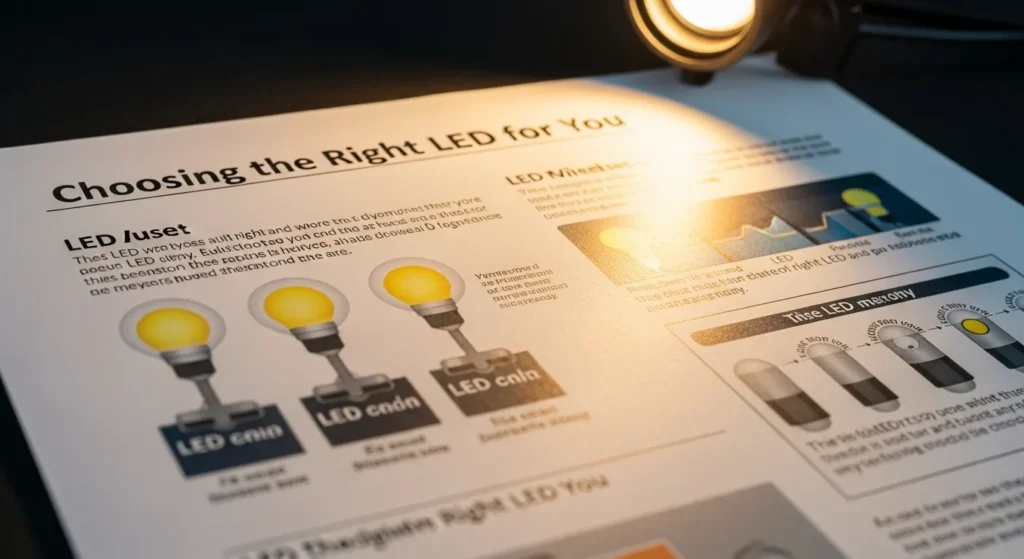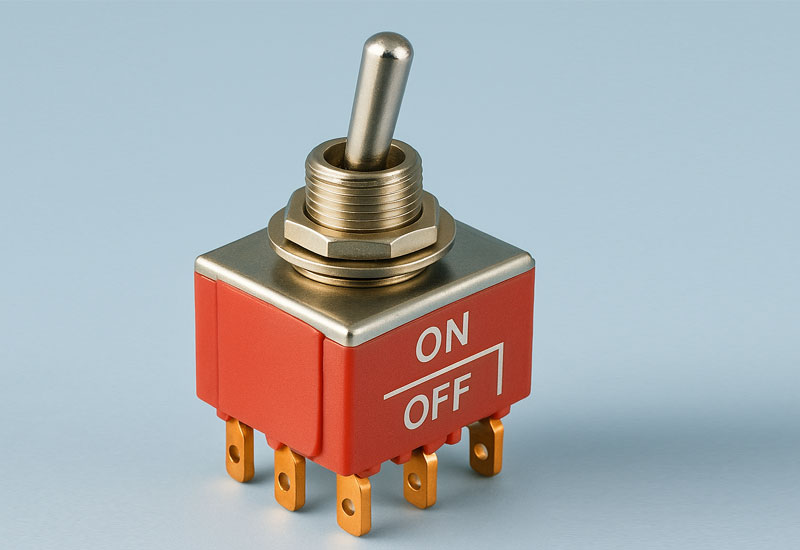Introduction to Light Emitting Diode
Have you ever wondered why the small indicator light on your TV stays on for years without burning out? Or why your home’s new LED bulb hardly heats up compared to an old incandescent lamp? The answer lies in the science of light-emitting diodes (LEDs). LEDs are not just “another type of bulb.” They represent a major leap forward in lighting technology, offering energy savings, a longer lifespan, and endless design possibilities. In this guide, we’ll break down what LEDs are, how they work, the different types you’ll come across, and how to choose the right one for your needs. Note: You may also hear about OLEDs (Organic LEDs). These are used mainly in smartphone and TV displays. Here, we are focusing on standard semiconductor LEDs used in lighting, electronics, and industry.
What you’ll learn
In this guide, you’ll discover how LEDs work, their advantages and drawbacks, technical specifications like CRI and efficacy, and real-world applications. Whether you’re a student, engineer, or just curious, this will give you a complete understanding of LEDs. How LEDs create light in a unique way. The key performance factors: luminous efficacy, CRI, and L70. The main types of LEDs and where they are used. Everyday applications and the pros and cons . How to pick the right LED for your home or project
What Is an LED and How Does It Work?
An LED (Light Emitting Diode) is a small electronic component made from semiconductor material. When electricity flows through it, electrons meet “holes” in the material and release energy as light a process called electroluminescence. Unlike old incandescent bulbs that waste energy as heat, LEDs stay cool, use less power, and last much longer.
How LEDs Are Made
An LED is like a tiny sandwich:
- One side (n-type) has extra electrons.
- The other side (p-type) has spaces (holes) for electrons.
- When powered by a direct current (DC), electrons flow, meet holes, and emit light.
- The color of the light depends on the materials used. For example:
Gallium arsenide → red light Gallium nitride → blue light
This is why LEDs come in various colors, from soft white to bright green.
Key LED Performance Metrics
- Luminous efficacy (lm/W): How much light you get per watt.
- LEDs: 75–200 lm/W
- Incandescent bulbs: 10–17 lm/W
- Color Rendering Index (CRI): How natural colors look under the light.
- Good CRI: 80+
- Great CRI (for art/kitchens): 90+
- Lumen maintenance (L70): How long the LED lasts before dimming to 70% of its brightness.
- Lifespan: 25,000–50,000 hours
Why LEDs Are a Game-Changer

I distinctly recall exchanging a flickering incandescent bulb in my old apartment for an LED and being shocked that the LED stayed bright for years. If you swap out an incandescent for an LED, you are going to see a massive electricity savings. LED bulbs are highly efficient, using most of the electricity they consume to produce light rather than converting most of it to heat. A 60-watt incandescent bulb can produce 800 lumens and it may take 8-10 watts of an LED to produce the same light. That’ll translate to a significant savings on your electricity bill!
LED’s are also very durable. They are solid state devices, which means while glass bulbs are very fragile, light emitting diode can take a bit of a bump without breaking. And, they last 25,000 hours or more, or about 25 times the 1,000 hours of an incandescent bulb. It’s no wonder LED’s have become the gold standard in everything from home lighting to car headlights.
How LEDs Are Made: A Peek Behind the Scenes
Ever wonder how these little light makers are made? LED chips begin as a semiconductor wafer, usually made from gallium arsenide or indium gallium nitride. Manufacturers ‘dope’ the semiconductor with desired impurities to create the n-type and p-type regions. They then stack these layers to form a p-n junction, where the magic of light happens.
It then gets encased in a clear epoxy dome shape, which protects the chip and directs the light emission outwards. Essentially creating a precious little gemstone that lights up when it receives power. Cool fun fact, the shape of the dome is critical to direct the light. They are great for direction lighting applications such as spot lights or task lamps!
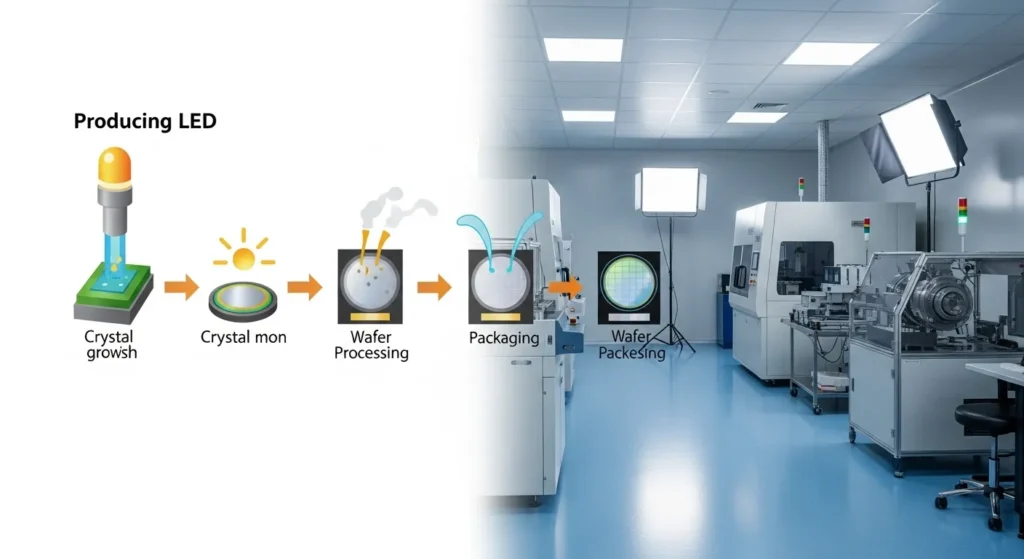
Everyday Uses: Where You’ll Spot LEDs
LEDs are everywhere! It’s difficult to look anywhere without seeing them once you start noticing them. The bulbs in your home are most likely diode emitting light, on the lamps, in the under-cabinet strips, and even on the backlighting of your TV. When you step outside you can see them in streetlights, traffic signs, and car tail lights. They are even present in your phone for the display, or used as flash for your selfies.
One user on Reddit claimed they replaced every bulb in their home with LEDs purchased from Philips and saw their power bill decrease by almost 20%! These kinds of findings indicate that LEDs offer a viable option to those wishing to save energy without sacrificing brightness.
Types of LEDs
- Indicator LEDs – small red/green lights on devices.
- High-power LEDs – used in flashlights, car headlights, street lighting.
- Surface-Mounted Device (SMD) LEDs – widely used in strip lighting, compact fixtures.
- Chip-on-Board (COB) LEDs – multiple LED chips packed together for high brightness.
- Organic LEDs (OLEDs) – thin, flexible displays in smartphones and TVs.
- UV and IR LEDs – specialized for sterilization, medical, and remote-control applications.
| Type of LED | Main Uses |
| Indicator LEDs | Power/status indicators on electronic devices, small signal lights |
| High-Power LEDs | Flashlights, automotive headlights, street lights, outdoor floodlights |
| SMD LEDs | LED strips, compact light fixtures, decorative and task lighting |
| COB LEDs | High-brightness panels, downlights, floodlights, industrial lighting |
| OLEDs | Smartphone displays, TV screens, flexible and transparent displays |
| UV & IR LEDs | Sterilization, medical equipment, remote controls, security cameras |
Beyond the Home: LEDs in Cool Applications

LEDs aren’t only used to make your living room pretty. They have made their way into some pretty interesting applications. For starters, in hospitals, UV LEDs have been shown to disinfect equipment because they have a high germ-killing mechanism. In agriculture, UV and specialized LEDs can replace sunlight with features to make plants thrive indoors. I recently read about a vertical farm that used red and blue LEDs and increased crop yield by 30%. Not too shabby for a little diode either! Then there are displays, giant loud LED billboards such as Times Square or stadium scoreboards rely on a lot of different combinations of red, green, and blue LEDs to create images. We have also seen LEDs used in art and design for dynamic installations that can turn spaces into experiences. Future Applications: LEDs are now being integrated into smart home systems, connected to Wi-Fi or Bluetooth for dimming and color control via mobile apps. In healthcare, specialized LEDs are used for phototherapy (skin treatments) and sterilization with UV-C LEDs. In automotive, adaptive LED headlights adjust beam patterns in real-time for better safety.
The Colorful World of LEDs
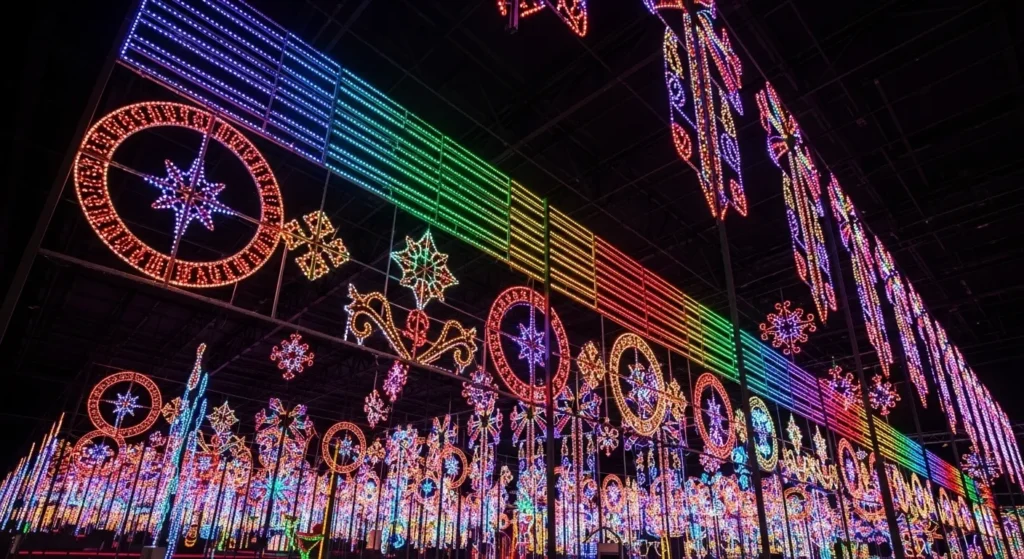
LEDs are amazing because they can produce a variety of colors. By changing the semiconductor materials, manufacturers can create light at any point in the light spectrum, from infrared for remote controls to ultraviolet for sterilization. Do you wonder why your TV remote actually works? It’s a signal generated by an light emitting diode using infrared light. As for the bright blue LEDs in your gaming setup? Those are most likely made using gallium nitride, which made white LEDs possible when it was invented in the 1990’s.
This ability to create colors allows for endless possibilities with LEDs. Take automotive lighting for example; white LEDs produce bright, crisp headlights while red LEDs can be used for taillights ensuring a driver can see the light but still not be blinded.
Pros and Cons: What’s the Real Deal?
LEDs have a lot going for them, but let’s be real no tech is perfect. Here’s a quick rundown:
- Pros: Energy-efficient, long-lasting, durable, and available in many colors. They’re eco-friendly, with no mercury (unlike some fluorescent lamps), and they produce minimal heat.
- Cons: Upfront costs can be higher than traditional bulbs, though prices have dropped significantly. Some LEDs can flicker if paired with incompatible dimmers, which can be annoying.
Technical Challenges:
- Thermal management: LEDs lose efficiency and lifespan if not cooled properly.
- Blue light concerns: Some LEDs emit excess blue light, which may affect sleep cycles.
- Lumen depreciation: Instead of burning out suddenly like old bulbs, LEDs gradually dim over years of use (often measured as L70 — the time until brightness drops to 70%)
A friend of mine once complained about a cheap LED bulb that flickered like a strobe light. Turns out, it wasn’t compatible with his old dimmer switch. Swapping to a dimmable LED fixed the issue, so it’s worth doing a bit of research before buying.
| Feature | Incandescent | CFL (Compact Fluorescent) | LED |
| Efficiency (lm/W) | 10–17 | 35–60 | 100–200 |
| Lifespan (hours) | ~1,000 | ~8,000 | 25,000–50,000 |
| Instant On | Yes | No (warm-up) | Yes |
| Environmental Impact | High (waste heat) | Contains mercury | Low |
| Cost | Cheap upfront | Moderate | Higher upfront, cheaper long-term |
LEDs in the Future: What’s Next?
I distinctly recall exchanging a flickering incandescent bulb in my old apartment for an LED and being shocked that the LED stayed bright for years. If you swap out an incandescent for an LED, you are going to see a massive electricity savings. LED bulbs are highly efficient, using most of the electricity they consume to produce light rather than converting most of it to heat. A 60-watt incandescent bulb can produce 800 lumens and it may take 8-10 watts of an LED to produce the same light. That’ll translate to a significant savings on your electricity bill!
LED’s are also very durable. They are solid state devices, which means while glass bulbs are very fragile, LED’s can take a bit of a bump without breaking. And, they last 25,000 hours or more, or about 25 times the 1,000 hours of an incandescent bulb. It’s no wonder LED’s have become the gold standard in everything from home lighting to car headlights.
Choosing the Right LED for You

With so many different types of LED bulbs and devices available, picking one can be overwhelming. When choosing an LED, begin by checking the lumens (brightness), not the watts; LEDs are less power-hungry and provide the same amount of brightness. For indoor home lighting, warm white (2700-3000K) creates a cozy atmosphere, while cool white (4000K +) is for an office or kitchen. If you like smart lighting, LIFX offers a range of LEDs that can be controlled with your phone for changing colors for mood settings.
How to Choose the Right LED
When selecting an LED, think beyond just brightness (lumens), color temperature, and fixture compatibility. A well-chosen LED ensures not only energy efficiency but also long-term performance and comfort. When buying LED lighting, keep these in mind:
✔ Lumens, not watts — lumens measure brightness.
✔ Color temperature — warm (2700K), neutral (4000K), cool (6500K).
✔ CRI rating — CRI ≥ 80 for general, CRI ≥ 90 for kitchens/art.
✔ Warranty period — good LEDs come with 3–5 year warranties.
✔ Dimmable compatibility — ensure it works with your dimmer switch.
✔ Certifications — look for Energy Star, UL, or equivalent marks.
✔ Quick Buying Checklist:
- Look for Energy Star or equivalent certifications to ensure efficiency and safety.
- Check the warranty period – quality LEDs often come with 3–5 year coverage.
- Ensure dimmable compatibility if your setup includes dimmer switches.
- For home lighting, prefer LEDs with CRI 90+ for natural, true-to-life color rendering.
By considering these factors alongside lumens and color temperature, you’ll be able to select LEDs that last longer, perform reliably, and provide better lighting quality for your needs.
Conclusion: Why LEDs Matter to You and Me
In short, LEDs are not just another lighting option they represent the future of illumination. With their unmatched efficiency, versatility, and ever-expanding applications, LEDs are transforming how we light our homes, cities, and devices. As technology improves, expect even smarter, more efficient, and environmentally friendly LEDs in the near future.
FAQ Section
Why are LEDs more expensive upfront?
Because they use advanced semiconductors and heat management systems. However, long lifespan means they are cheaper in the long run.
Do LEDs attract insects?
Most LEDs emit less UV and infrared light, so they attract fewer insects compared to incandescent or CFL.
Why do some LEDs flicker?
Flickering is usually due to poor-quality drivers or compatibility issues with dimmers.
Can LEDs be recycled?
Yes, but unlike CFLs, they don’t contain mercury. Many recycling programs accept LEDs as e-waste.
What does CRI mean and which CRI should I pick?
CRI stands for Color Rendering Index. For homes, CRI 80+ is fine. For kitchens, studios, or art, CRI 90+ is better.
What is L70?
L70 tells you when an LED will dim to 70% of its original brightness. Most quality LEDs last 25,000–50,000+ hours before this happens.
Why do some LEDs flicker?
Poor-quality drivers or incompatible dimmers are usually to blame. Choose LEDs labeled dimmable and check dimmer compatibility.
Can LEDs be recycled?
Yes. They don’t contain mercury, but they should be recycled as electronic waste instead of regular trash.


